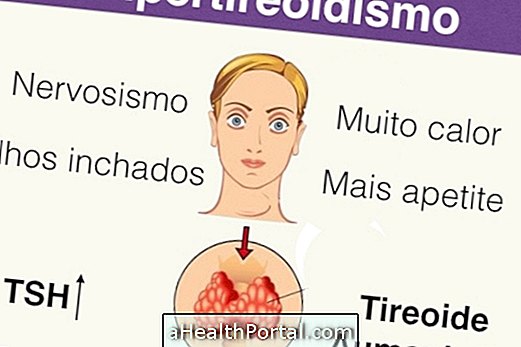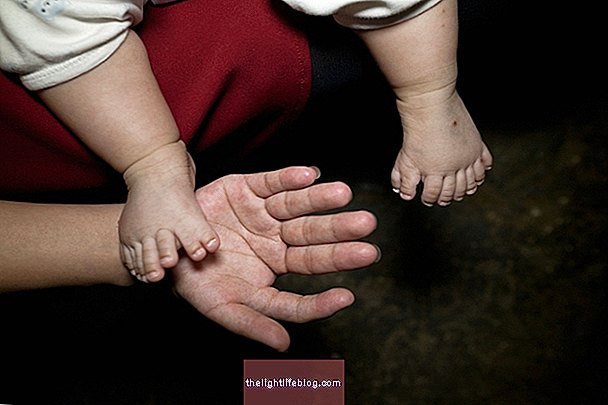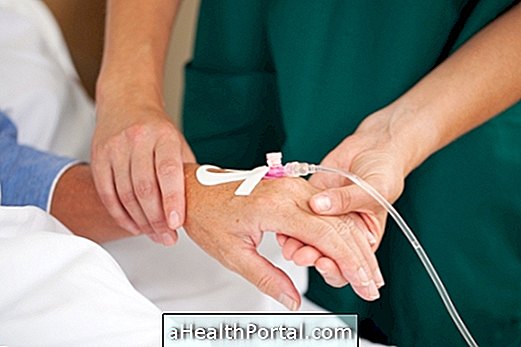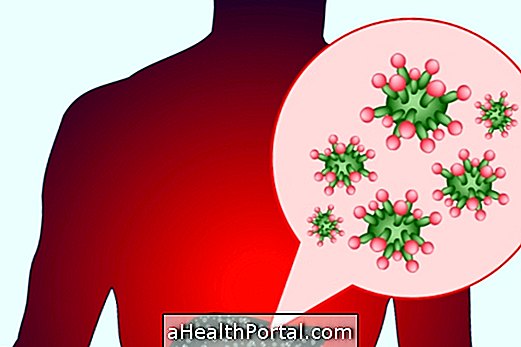Type 2 diabetes is a disease whose blood sugar levels are higher than normal, due to a higher insulin resistance or a lower amount of insulin production, generating symptoms such as thirst, dry mouth, frequent urination, and weight loss. cause that is not always identified by the patient with the disease.
The causes of this disease may be related to hereditary factors, obesity, sedentarism and excessive consumption of foods rich in carbohydrates.
In some cases, type 2 diabetes is curable and treatment can be done through the use of insulin, oral hypoglycemic agents, proper diet and exercise.

What are the symptoms
Symptoms of type 2 diabetes are more common after age 40 and are:
- To lose weight while eating a lot;
- Be very thirsty and dry mouth;
- Be very hungry;
- Frequent urination;
- Blurred or blurred vision;
- Difficulty in wound healing;
- Episodes of candidiasis, boils, and urinary tract infections several times a year;
- Tiredness and apathy, even without making any effort.
These symptoms are not always present and may not appear at the same time.
How is the diagnosis made?
The diagnosis of type 2 diabetes mellitus is made through the examination of blood or urine, which evaluates the rate of glucose in the body. This test can be done fasting and should be performed on 2 different days for a comparison between the results.
The reference values of fasting glucose are up to 110 mg / dL of blood. When the subject has fasting glucose values between 110 and 125 mg / dL, he is diagnosed with pre-diabetes and when he has fasting glucose above 126 mg / dL he may have diabetes.
What is the treatment
Treatment for type 2 diabetes can be done through:
- Use of insulin or oral hypoglycemic agents, such as Metformin;
- Low-sugar, low-carbohydrate diet in bread, cake, biscuit, pasta, potatoes and rice;
- Moderate physical exercises, under the guidance of the physical trainer, to avoid hypoglycemia;
- Low consumption of alcoholic beverages;
- Daily check of the rate of insulin in the blood upon waking and after meals.
In most cases, this treatment should be performed throughout life and it is important that the individual knows how to check their own blood sugar levels, to do it at home daily and, depending on the result, treat it through diet or of medication intake. Learn more about treatment.
In many cases, it is possible to achieve the cure of type 2 diabetes through weight loss, which can be achieved through proper exercise and diet.
Consequences of type 2 diabetes
Some possible consequences of type 2 diabetes that are not properly treated are:
- Severe vision changes that can lead to blindness;
- Poor healing of wounds that can lead to limb necrosis and amputation;
- Central nervous system dysfunction;
- Cardiac complications and coma.
These complications can also occur if the individual does not follow the treatment correctly. See also How can diabetics protect themselves from heart disease.


















